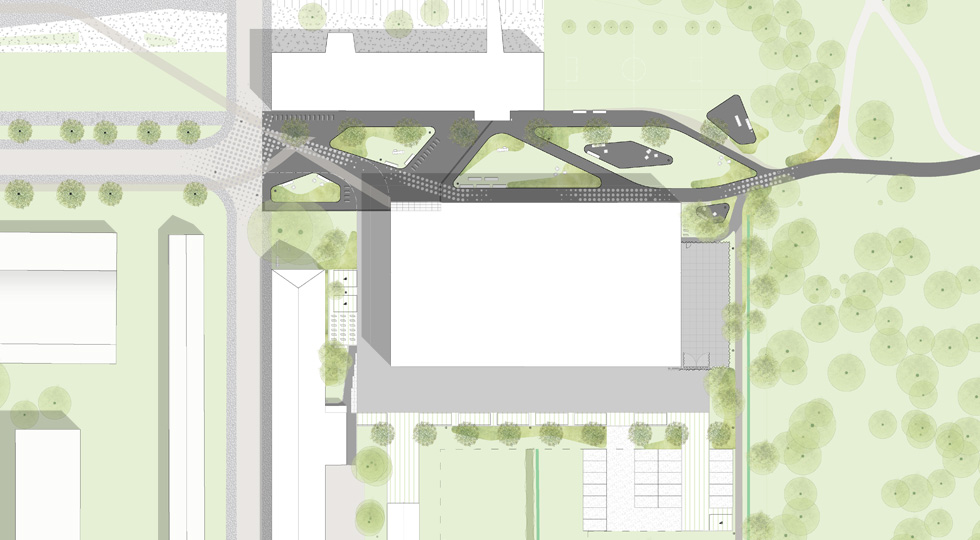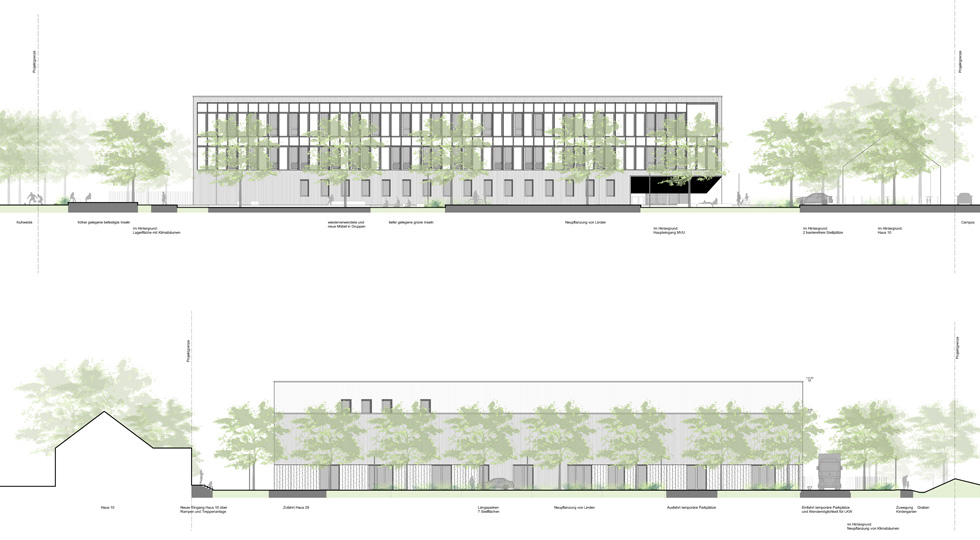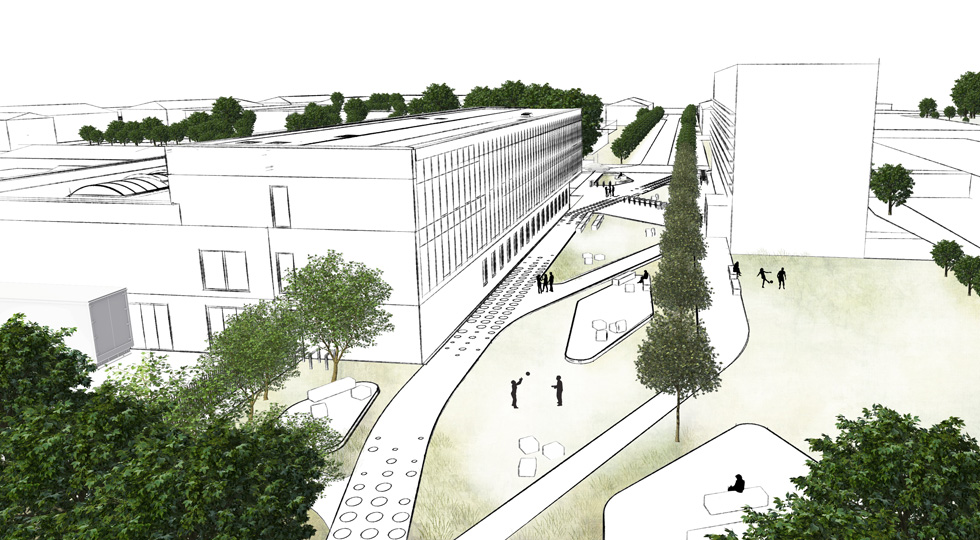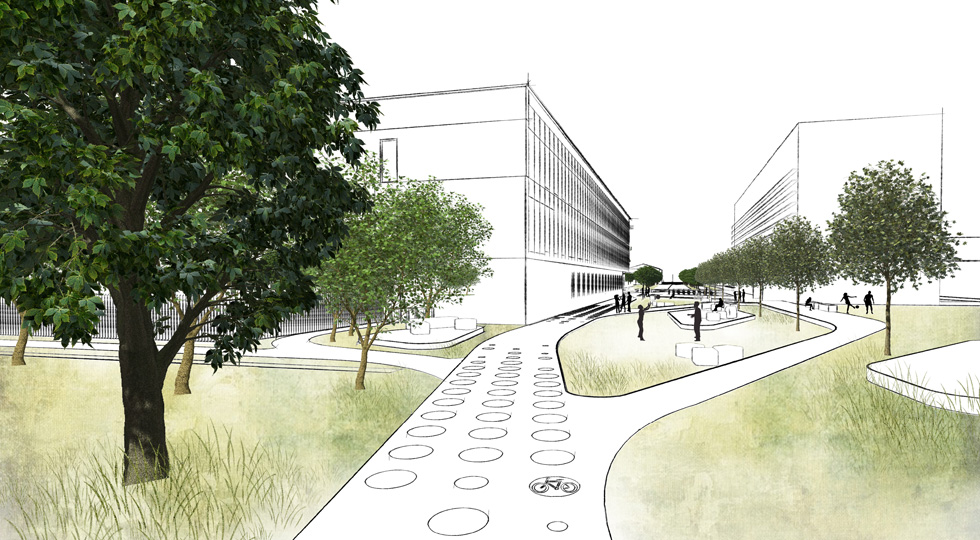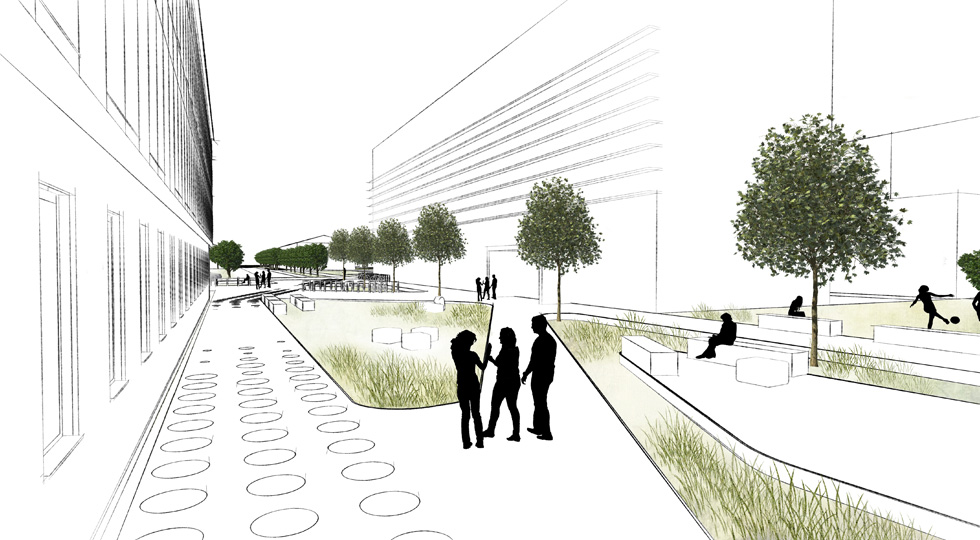Client: national building- and property administration Rostock
Design team: ARGE Lysann Schmidt (landscape architect) + Ingenieurbüro Hadan & Schmidt (architect) + Ingenieurbüro emutec GmbH (TBE)
Location: Wismar, Germany
Date: 2020
Surface: 9.800 m2
Costs: 1.450.000 € (without tax)
The open spaces of the new university building are divided into three areas: the campus recreation area in the north, the access area with parking spaces in the south, and storage space in the east.
The position of the site in the east of the campus, directly adjacent to the public park, prompted us to rethink and upgrade this entrance to the campus. The design concept strengthens the relationship to the park with its protected biotope “cow pasture” through the irregular green spaces and swinging pathways.
The recreational area between the design department building and the new laboratory building therefore includes paved pathways as well as recessed, furnished green islands. The paved areas serve to provide access to both adjacent buildings and are widened into small plazas in some areas for bicycle parking or temporary exhibitions. The green spaces serve both for student use (chilling, picnicking, working) and for rainwater retention. In case of heavy rainfalls, the recessed green spaces absorb the excess rainwater, e.g. during heavy rain events, to relieve the sewage system. The supplementary planting of the lawn with perennials and grasses serves the character of the recreational area as a qualitative green space.
A traffic guidance concept was developed to provide orientation for cyclists, pedestrians and motorists. Graphic markings on the asphalt at the intersections make the intended bicycle lane clear. In addition to the markings for cyclists, there are also vehicle lanes in the Shared Space to provide orientation for all road users.
A landscape management plan with an impact and compensation balance sheet was also drawn up to determine and compensate for the impact on the neighbouring areas of the “Kuhweide”.
